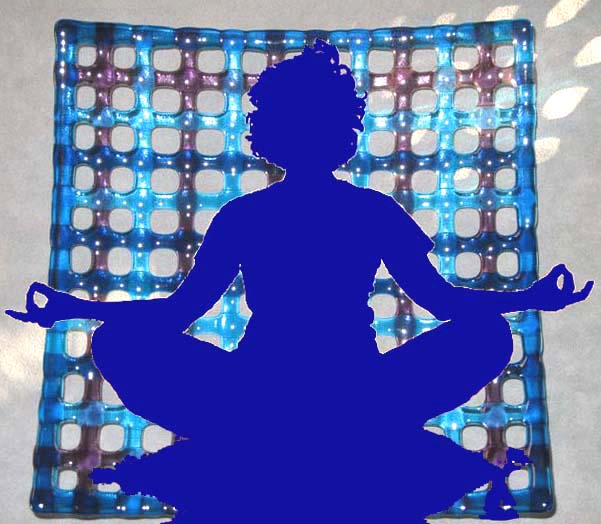

About Ro Palius and Glass Yogi
Ro Palius has been expressing herself through art since she was a child. Ro has worked with many different mediums over the years such as batik, painting, ceramics, floral design, mosaics, photography and glass, but has spent the last fourteen years submerging herself in the last two mediums. Greatly inspired by Nature her work explores color and plays with visual textures.
Ro grew up in northern New Jersey and moved westward via Arizona, landing in San Luis Obispo in 1990 where she was inspired by the beautiful surroundings to capture what she saw within a frame. Her photography is primarily nature based and frequently explores some of the smallest details in the most basic things.
After taking a basic stained glass class in 1998 she was instantly hooked by the colors and textures that glass had to offer. A few years later she was introduced to the art of warm glass, i.e. kiln formed glass. Warm glass is the term for glass processes that occur between 1100 and 1700 degrees Fahrenheit. That may not seem warm, but it is when compared to Hot Glass (Glass Blowing) temperatures, which frequently exceed 2000 degrees Fahrenheit. Warm Glass offered another avenue to explore the wonders of glass, and allowed for Ro to make things out of glass that people could hold, use and wear.
She started a line of Dichroic Glass Jewelry in 2008.
What is the definition of dichroic glass? Stunning, dramatic, eye-catching and dazzling. Dichroic means two colors. When this glass is viewed from different angles, it appears as numerous colors.
The word "dichroic" is pronounced Dye-Cro-Ick. The name comes from two Greek roots, "di" for two and "chroma" for color. Therefore dichroic literally means two-colored. It can split a beam of light into two beams with differing wavelengths. This glass appears to be different colors when viewed from different angles or in varying degrees of illumination.
This glass is hard to describe and almost as difficult to photography its stunning beauty. It has thin layers of chromium, silicon, titanium, aluminum and zirconium depending on the color. The color isn’t in the glass, but in a coating that is put on the glass in a vacuum chamber at high temperatures. The effect of this coating resembles an oil slick on water.
In a crystal like form, Dichroic is a film that adheres to the surface of the glass. This film surface is made from a combination of metal oxides and crystal quartz. These have been vaporized in a vacuum chamber. As the glass is suspended from the roof of the chamber, it is rotated to guarantee an even layer of these vapors adhere to the glass. Various layers, quantities, and thickness are created using the identical elements to make the diverse colors.
Dichroic glass was a product created by the space industry (NASA) and was used as an interference filter. Manufacturers coat the surface of a piece of base glass with layers of metallic oxides.
Dichroic glass is formed by adding a thin film of metallic oxides which transmit some light wavelengths while reflecting other wavelengths. This causes an iridescent effect on the glass. These multiple layers of metallic oxides are applied inside a vacuum chamber. They are applied to a base glass of either clear or black. There can be at least 17 layers of interference in this glass, and can change color depending on the angle it is held at.
These layers are extremely thin. You would need an electron microscope to actually see them on the glass. The thickness of these metallic oxides is about 1/40th of a sheet of paper. Then the oxides are fired on to the glass. There is no color produced in this process. The angle of the glass inside the vacuum chamber determines the color. You are in actuality seeing pure light being manipulated. Because of this process, you have a glass that transmits one color and reflects another.
It is very expensive to purchase. The larger sheets are 18" by 18" and can cost over $200.
